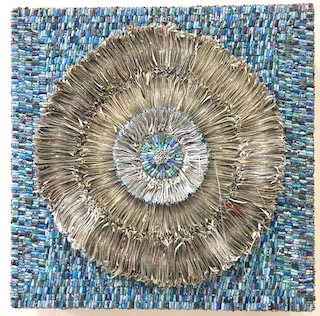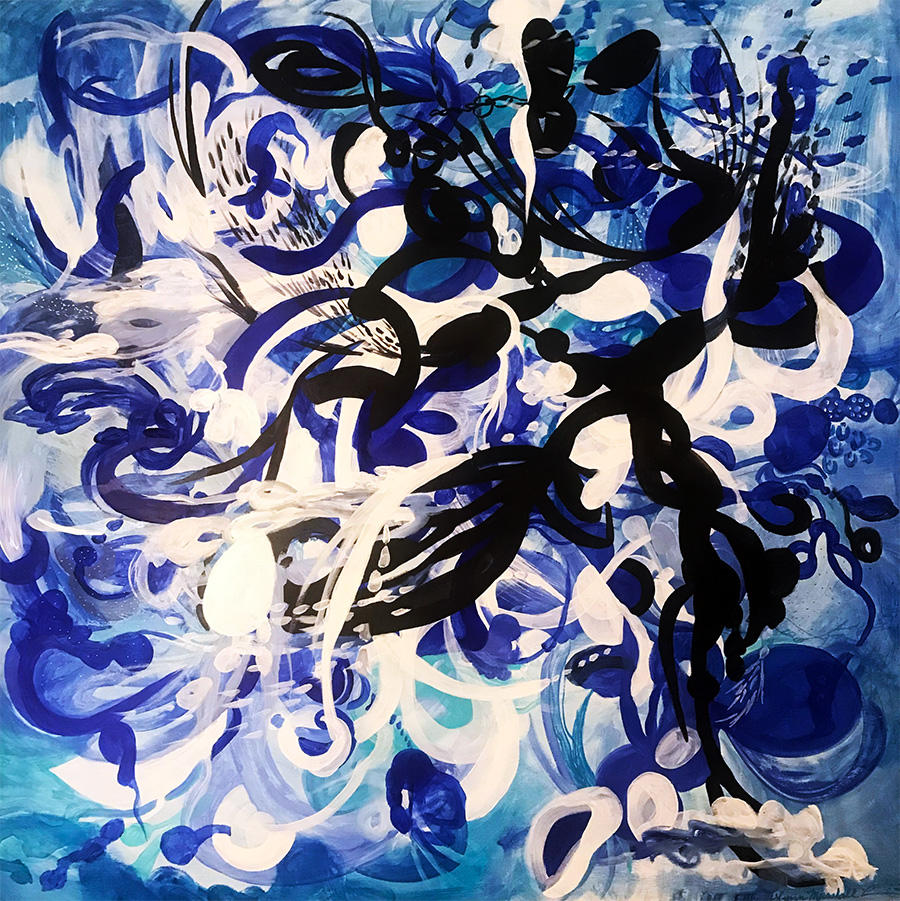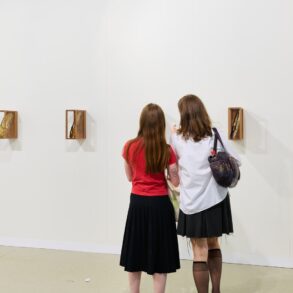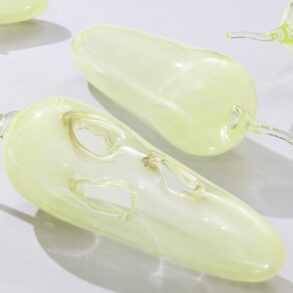Nearly 100 years ago, in her slim book A Room of One’s Own, Virginia Woolf argued that “it is necessary to have five hundred [pounds] and a room with a lock on the door if [women] are to write fiction or poetry.” Dedicated space and sufficient income remain essentials in this century, particularly for women, particularly for visual artists.
With this in mind, Lisa Tuttle curated A Room of Her Own: Women Studio Artists from AXC’s 40-Year History, on view at the Sinclair Gallery of The ArtsXchange in East Point through June 22.

Retired from her full-time job as arts administrator and consultant, work that afforded her the income to have a studio, Tuttle continues to curate shows and works daily in her studio. For the first 12 months of having that “room of her own,” she kept a photograph of the studio on her desk but managed only four days in her studio.
To honor the women who have or have had studios (rooms of their own) at ArtsXchange, Tuttle contacted 28 women. Not all could participate — for various reasons — but 23 did. She kept a light hand in curating, encouraging current work, hoping for something that represented them well.
Tuttle was delighted to discover that the connections among the women as a “crossover between poets and visual artists, spoken word artists and photographers” emerged. Several are social justice advocates whose art practice involves community. Many shared similar challenges in maintaining an individual studio with conflicts of teaching, children, jobs, caregiving or spouses relocating for jobs.
By bringing the artists and the work together, Tuttle learned how the women had connected during their time at ArtsXchange: that Caroline Lathan-Stiefel had shared a studio with Donna Pickens; that Lynn Marshall Linnemeier had shared her studio with ceramicist Chris Tholl; that Dana Cibulski, Rebecca DesMarais, Jaynie Crimmins and Elyse Defoor had occupied the same space at separate times.
Installed chronologically for the most part, the show begins with work by Alice Lovelace-Riley, founder of the ArtsXchange. Although Beverly Buchanan died in 2015, to honor her studio time at the ArtsXchange, Tuttle included one of the artist’s oil pastels.

In the process of curating, Tuttle adjusted the initial parameters for the artists’ selections to mount the creations of 23 women. The artists’ biography labels include not only their years at the ArtsXchange but often what they learned from one another, their various media and current work.
A Room of Her Own and the gathering of these women artists at the artist talk on May 5 demonstrate an “understanding of the breadth of the women’s work. When you have a studio, you are there to work,” explains Tuttle.
“You might say hello and have brief conversations, but then you shut your door and go to work. Yet even while working individually, you know these [other] artists are there; they are allies, supporting and encouraging one another, sharing knowledge of exhibition, gallery and funding opportunities. How stunningly beautiful it all is in the end — that’s what surprised me. It’s a really strong show.”
In art, Tuttle suggests, “the beautiful idea is always the philosophical thing, the aspiration of an artist, the understanding, what you are communicating. Here [in this show], it’s the idea of bringing these women together, visibility for these women. Just how strong it is, how important it is for any artist, for women, to have a studio, to have a place to work, as humble or as fancy those circumstances may be. All along, I wanted to honor the collective strength, talent, seriousness and professionalism that these women artists epitomize.”
Having been with the ArtsXchange for over 30 years, Tuttle hopes it will continue to thrive.

“We need to gather old friends and new friends as well to be involved. I want women artists and their work to have as much visibility as possible, for these women to be reconnected and more connected with the organization, for there to be some sort of continuity. And I want others to experience the value of having community arts space where artists can work and can get a studio.”
::
Pearl McHaney, Kenneth M. England Professor of Southern Literature Emerita at Georgia State University, is a former associate dean of fine arts at GSU, an avid reader and an appreciator of the arts. She is the co-founder of Revival: Lost Southern Voices and founding editor of the Eudora Welty Review.
This post was originally published on this site be sure to check out more of their content







